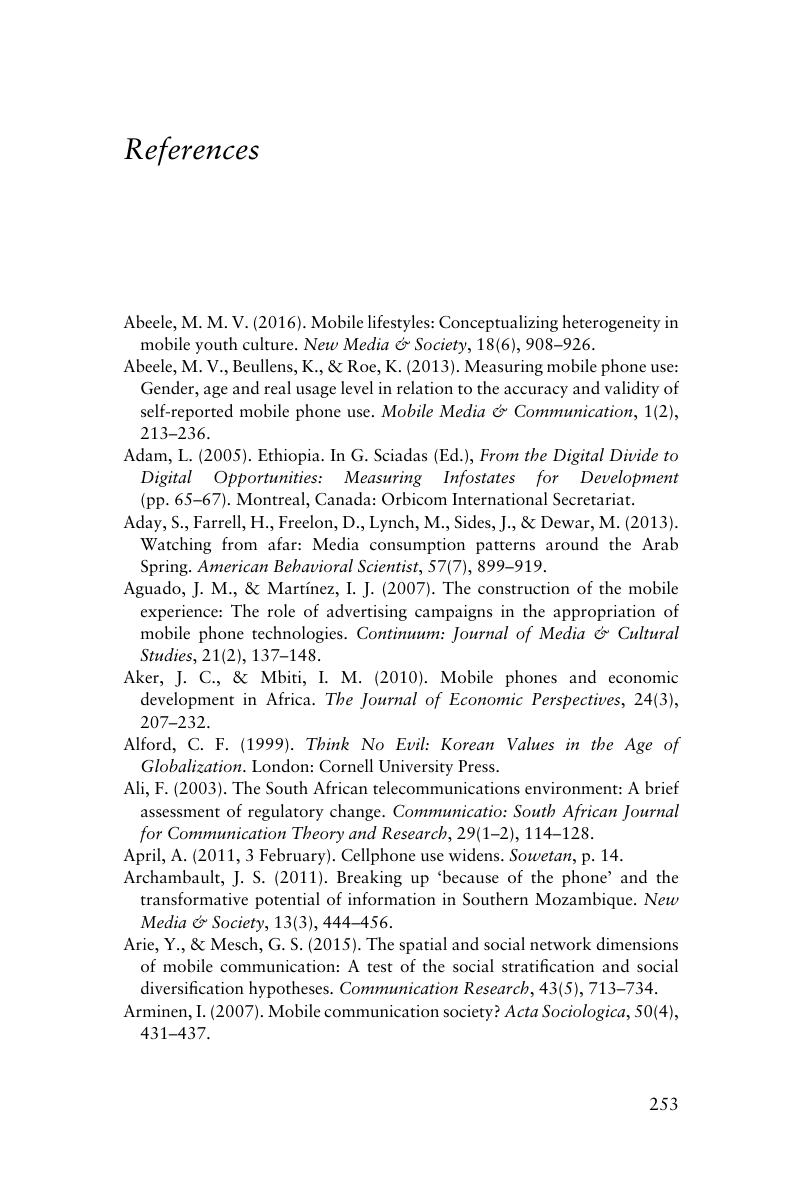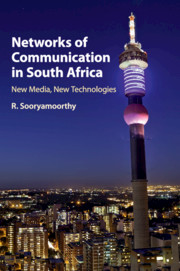Book contents
- Networks of Communication in South Africa
- Networks of Communication in South Africa
- Copyright page
- Dedication
- Contents
- Figures
- Tables
- Preface
- Abbreviations and Acronyms
- 1 New Media and the New Worlds of Communication
- 2 The Cellphone and the Internet: The African Communiscape
- 3 The Media, Old and New: Uses, Trends and Patterns
- 4 Media Use in South Africa
- 5 The Indispensability of Cellphones in Communication
- 6 Electronic Communication: Access, Application and Uses
- 7 Media, Communication and Social Networks
- 8 Social Networks – Structure and Location
- 9 Media, Communication and Networks
- References
- Index
- References
References
Published online by Cambridge University Press: 04 July 2017
- Networks of Communication in South Africa
- Networks of Communication in South Africa
- Copyright page
- Dedication
- Contents
- Figures
- Tables
- Preface
- Abbreviations and Acronyms
- 1 New Media and the New Worlds of Communication
- 2 The Cellphone and the Internet: The African Communiscape
- 3 The Media, Old and New: Uses, Trends and Patterns
- 4 Media Use in South Africa
- 5 The Indispensability of Cellphones in Communication
- 6 Electronic Communication: Access, Application and Uses
- 7 Media, Communication and Social Networks
- 8 Social Networks – Structure and Location
- 9 Media, Communication and Networks
- References
- Index
- References
Summary

- Type
- Chapter
- Information
- Networks of Communication in South AfricaNew Media, New Technologies, pp. 253 - 277Publisher: Cambridge University PressPrint publication year: 2017



